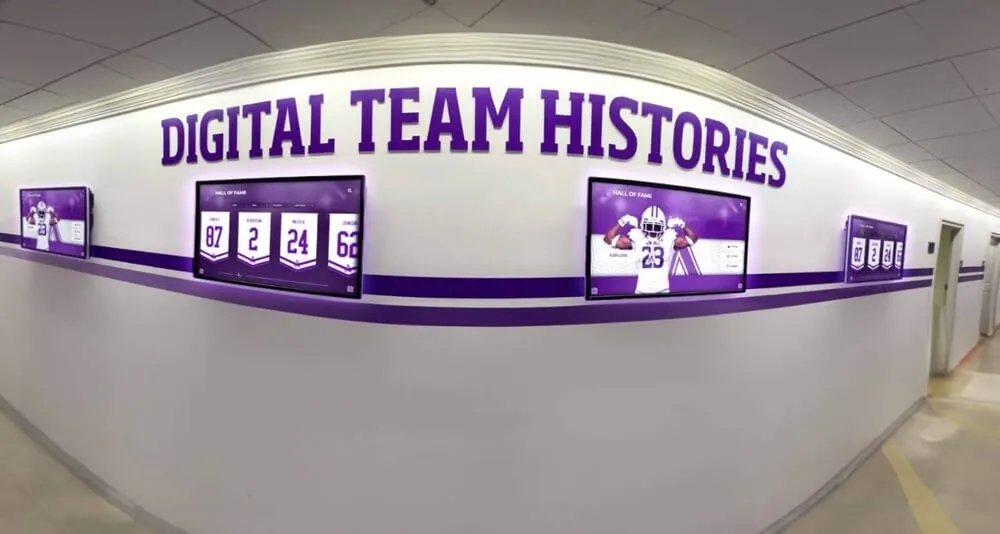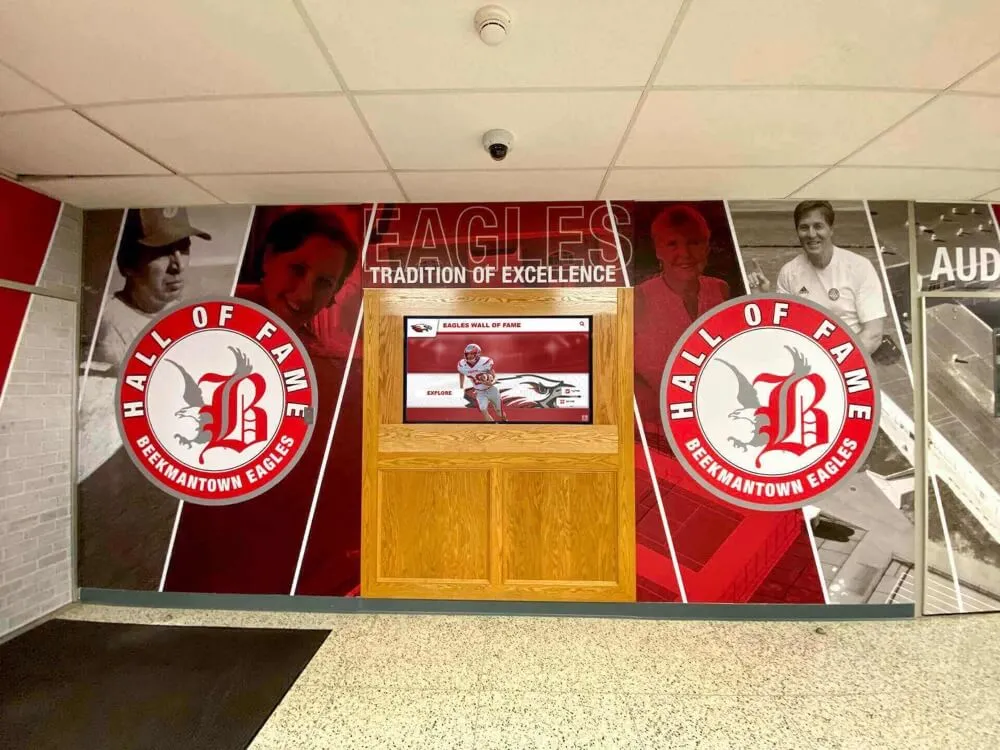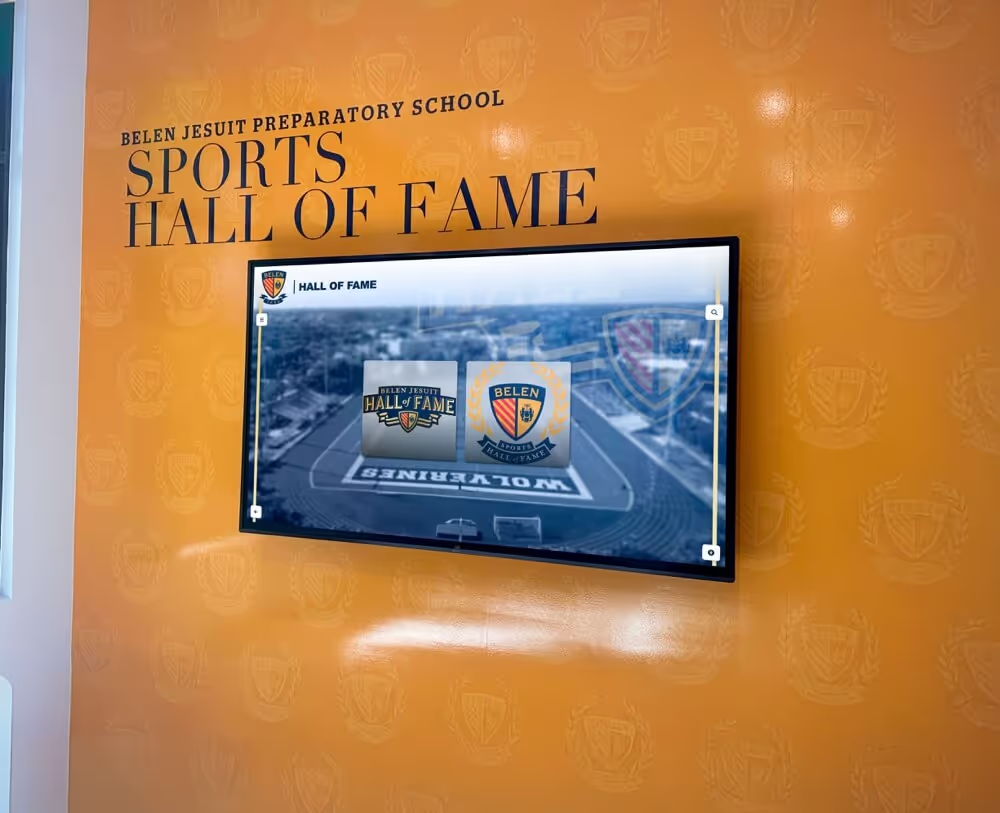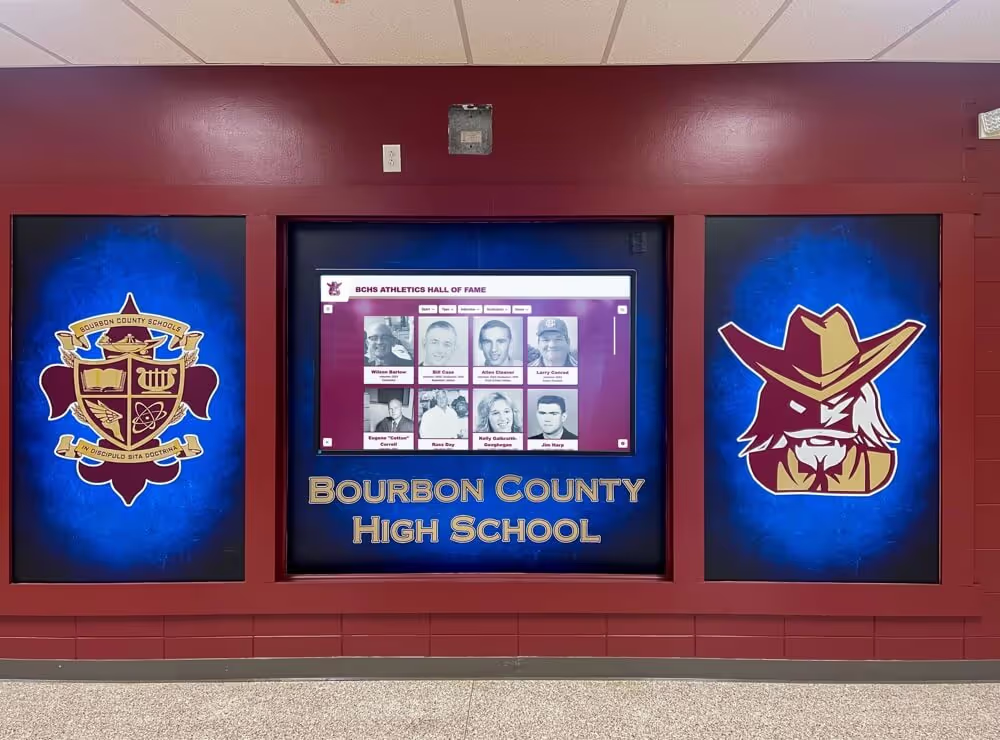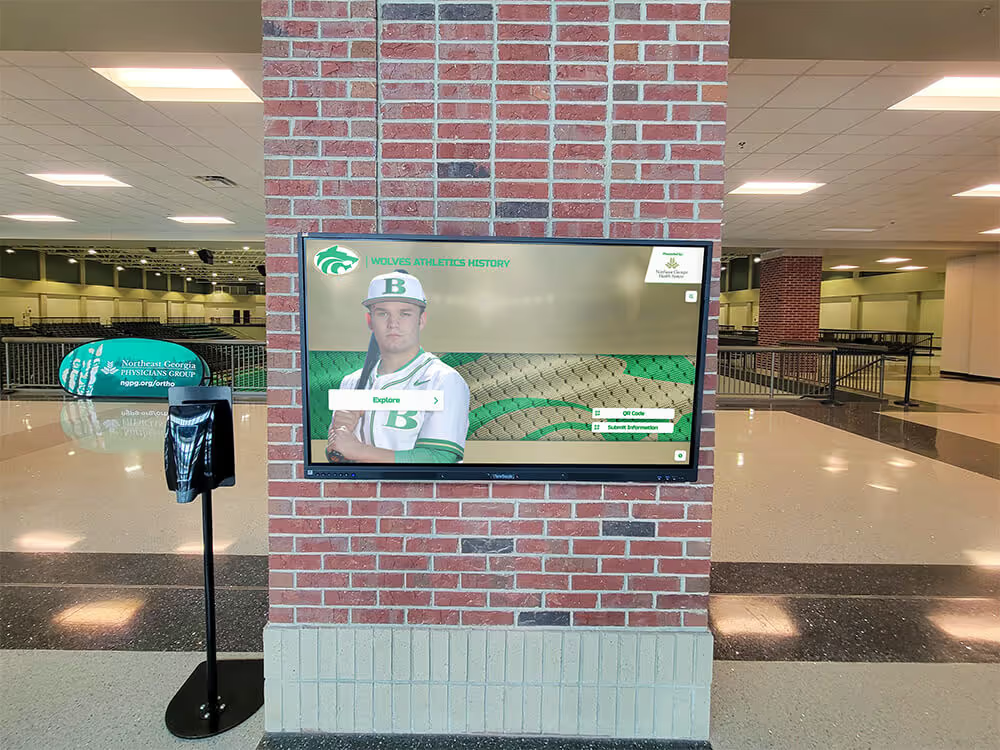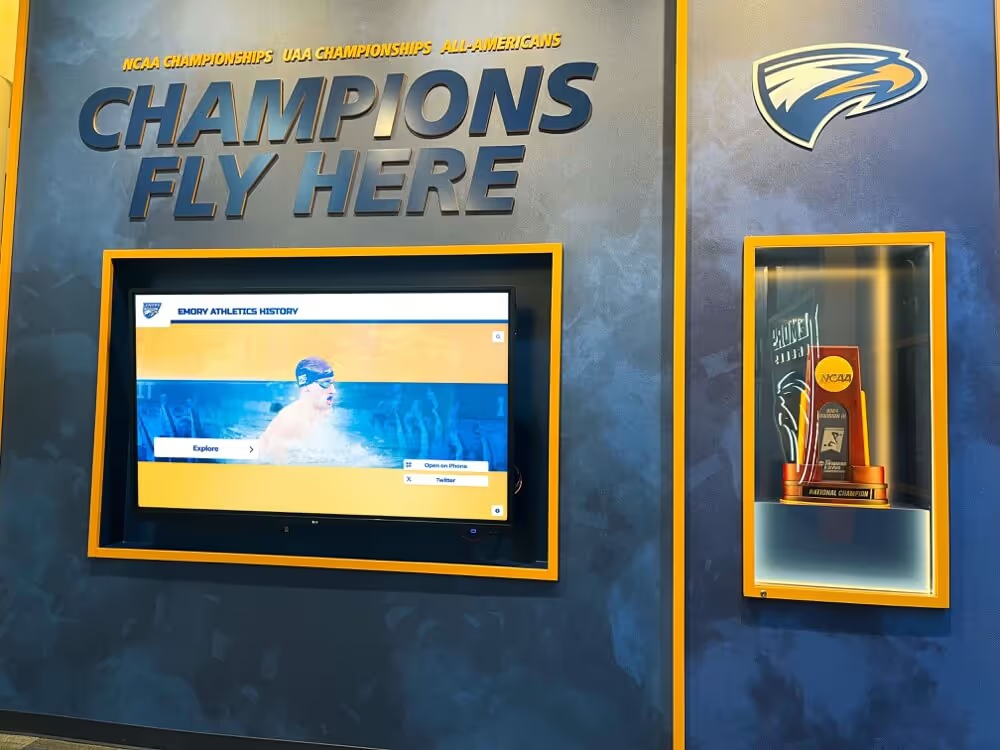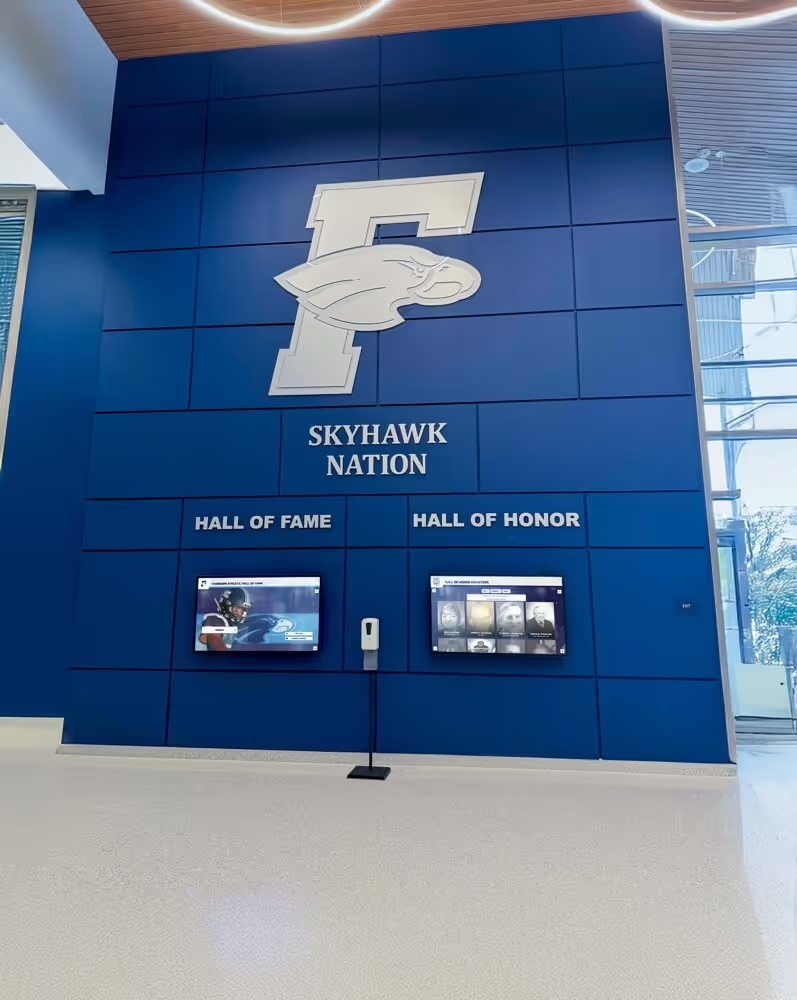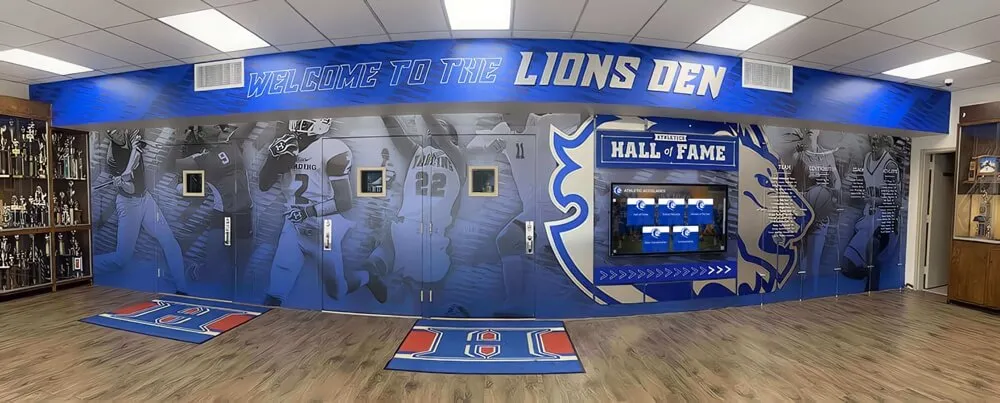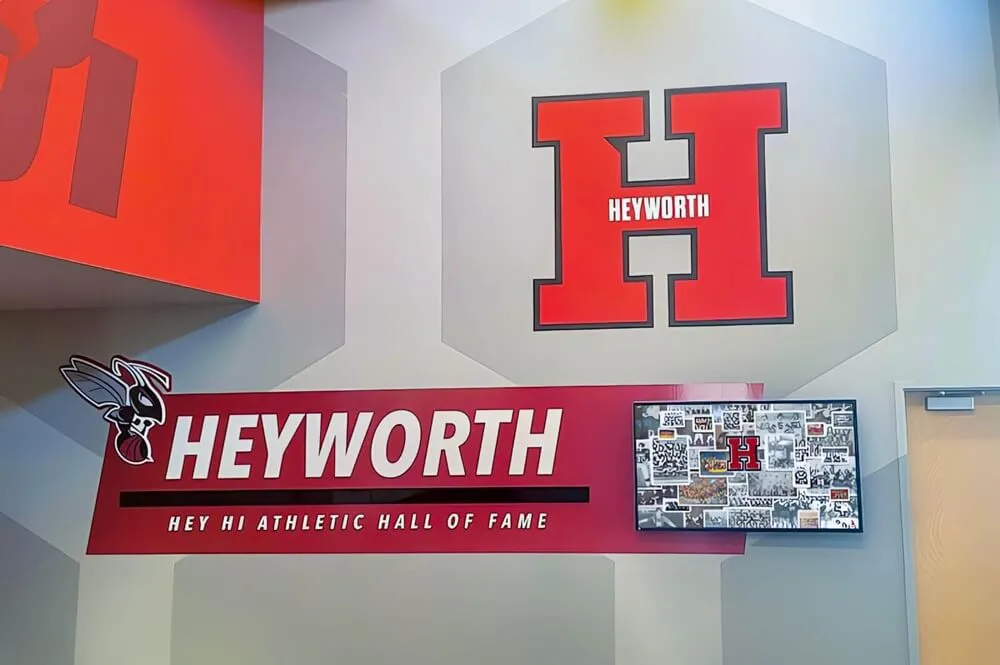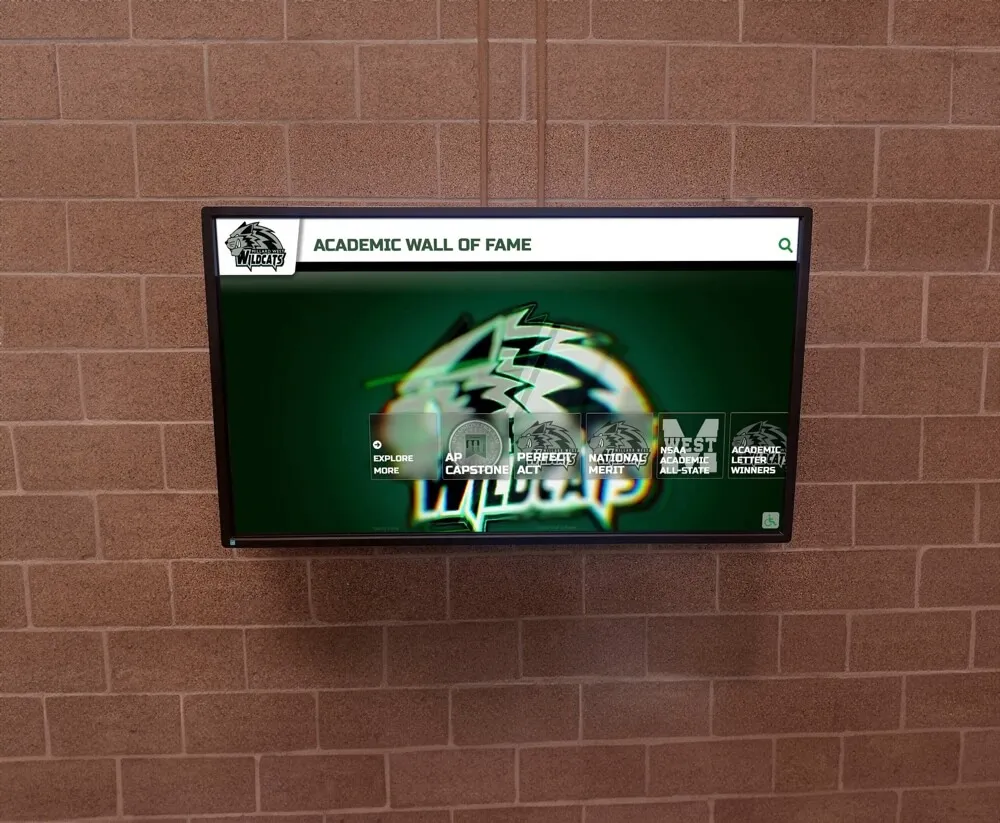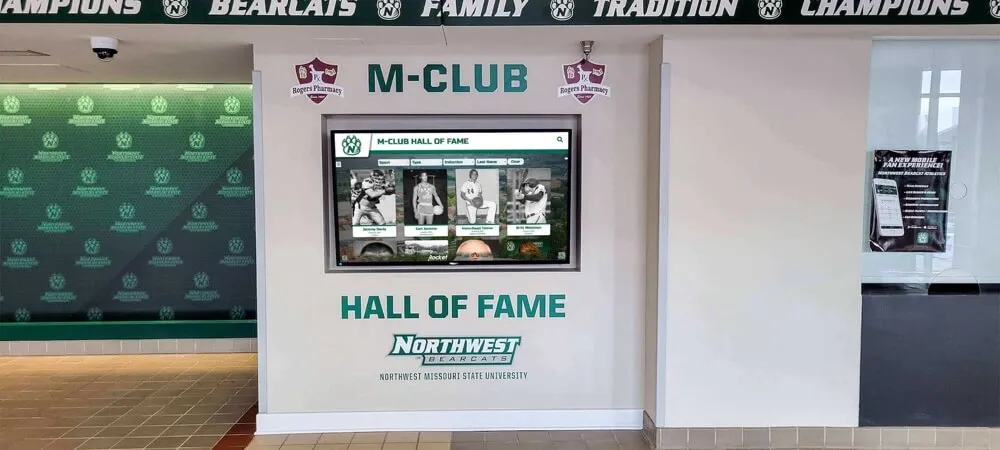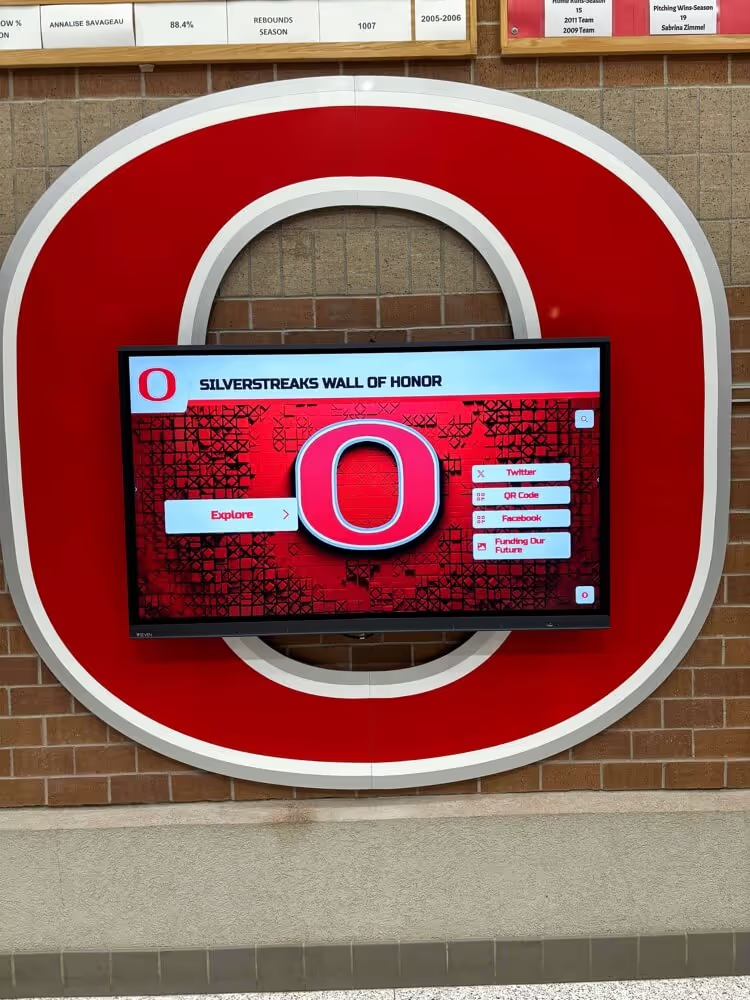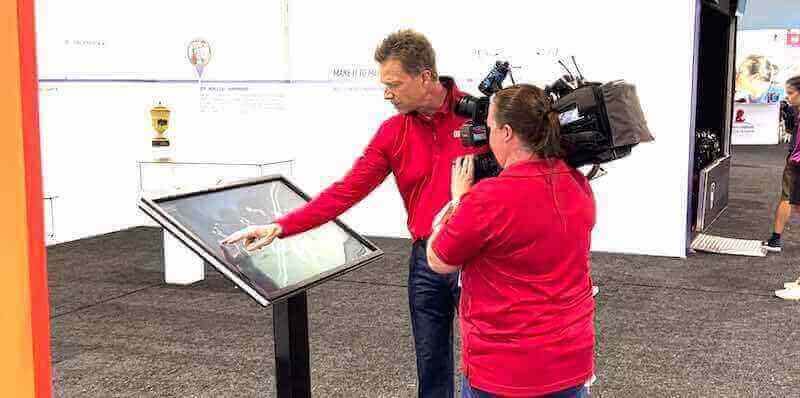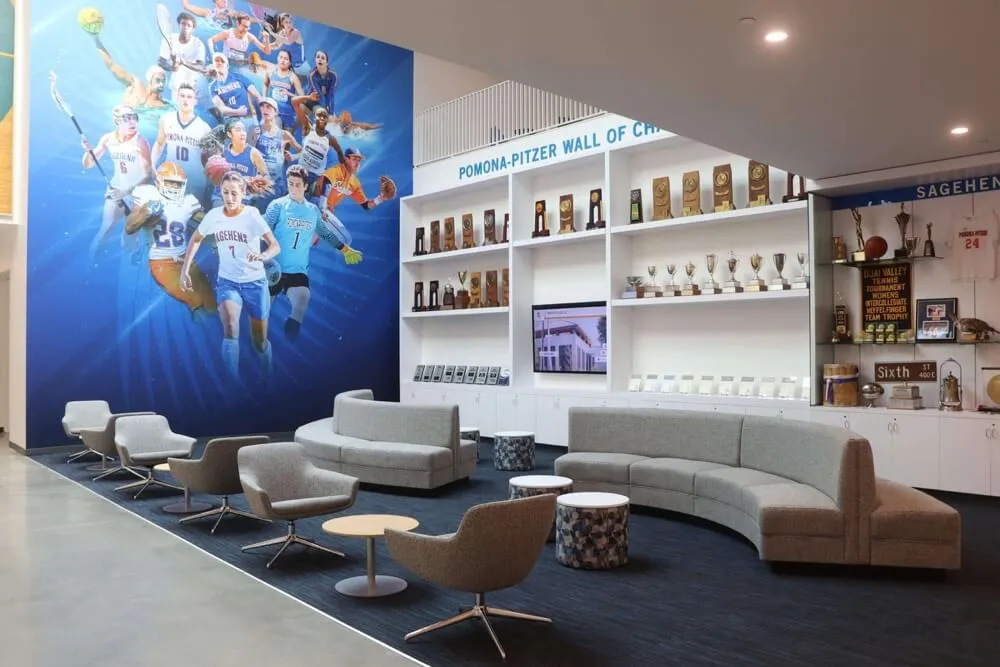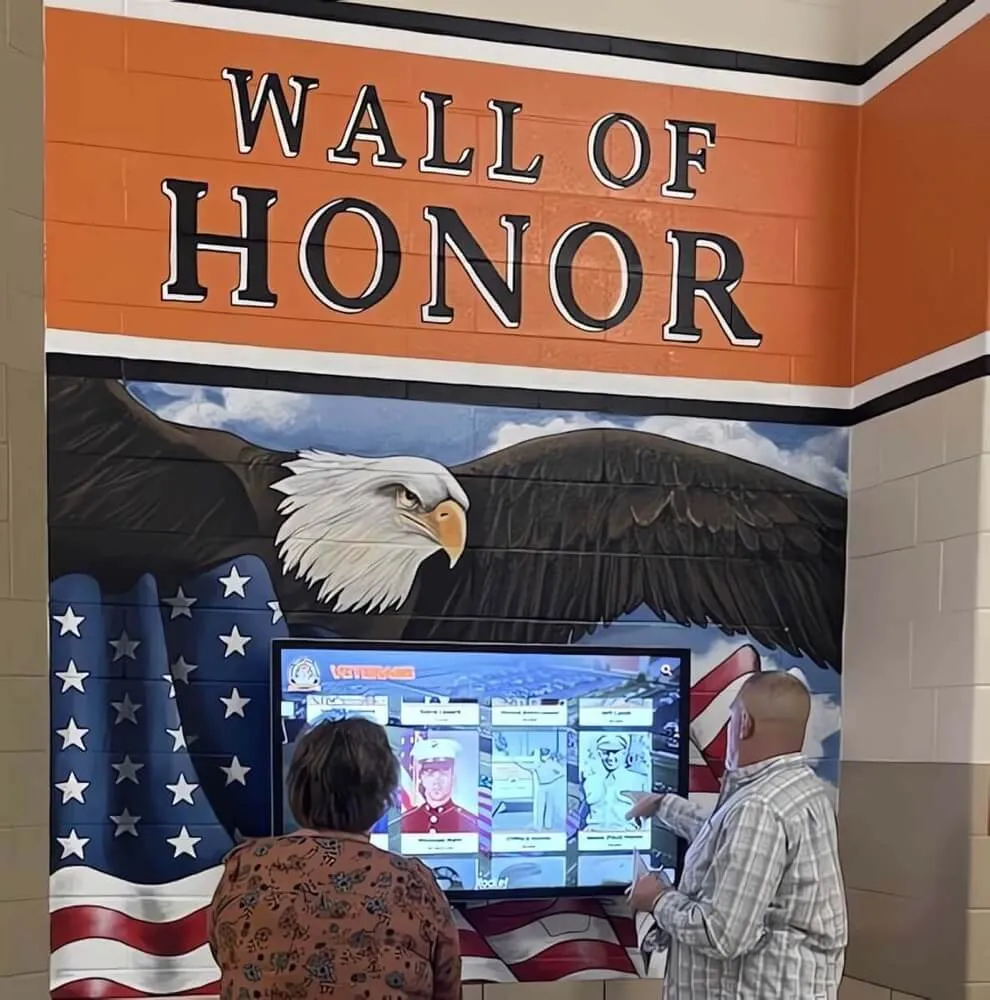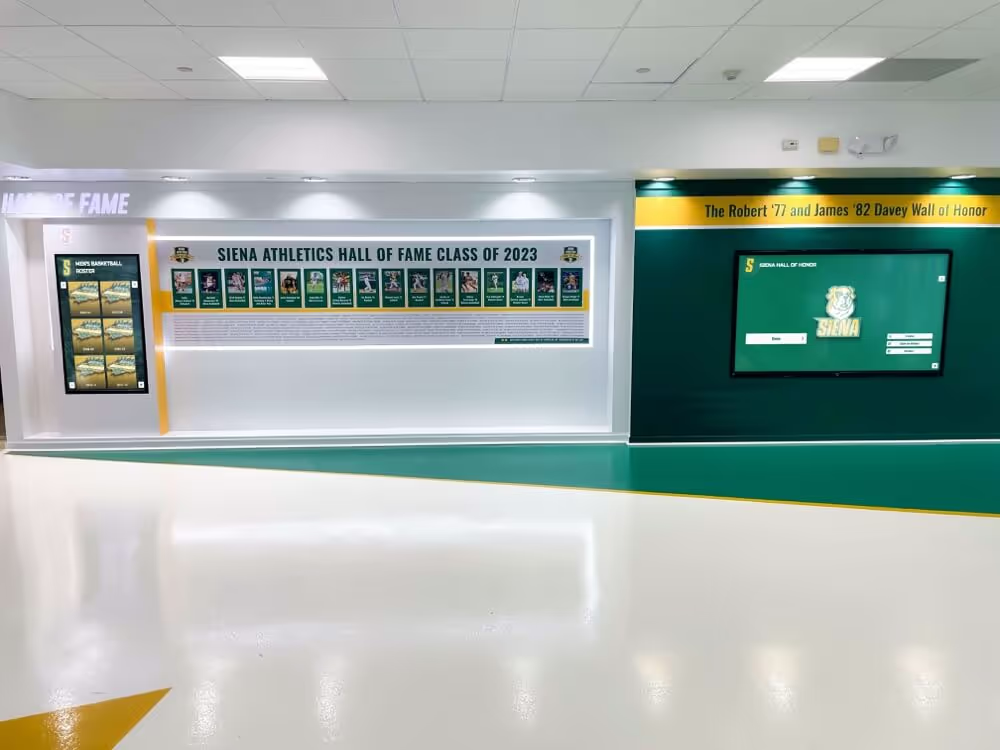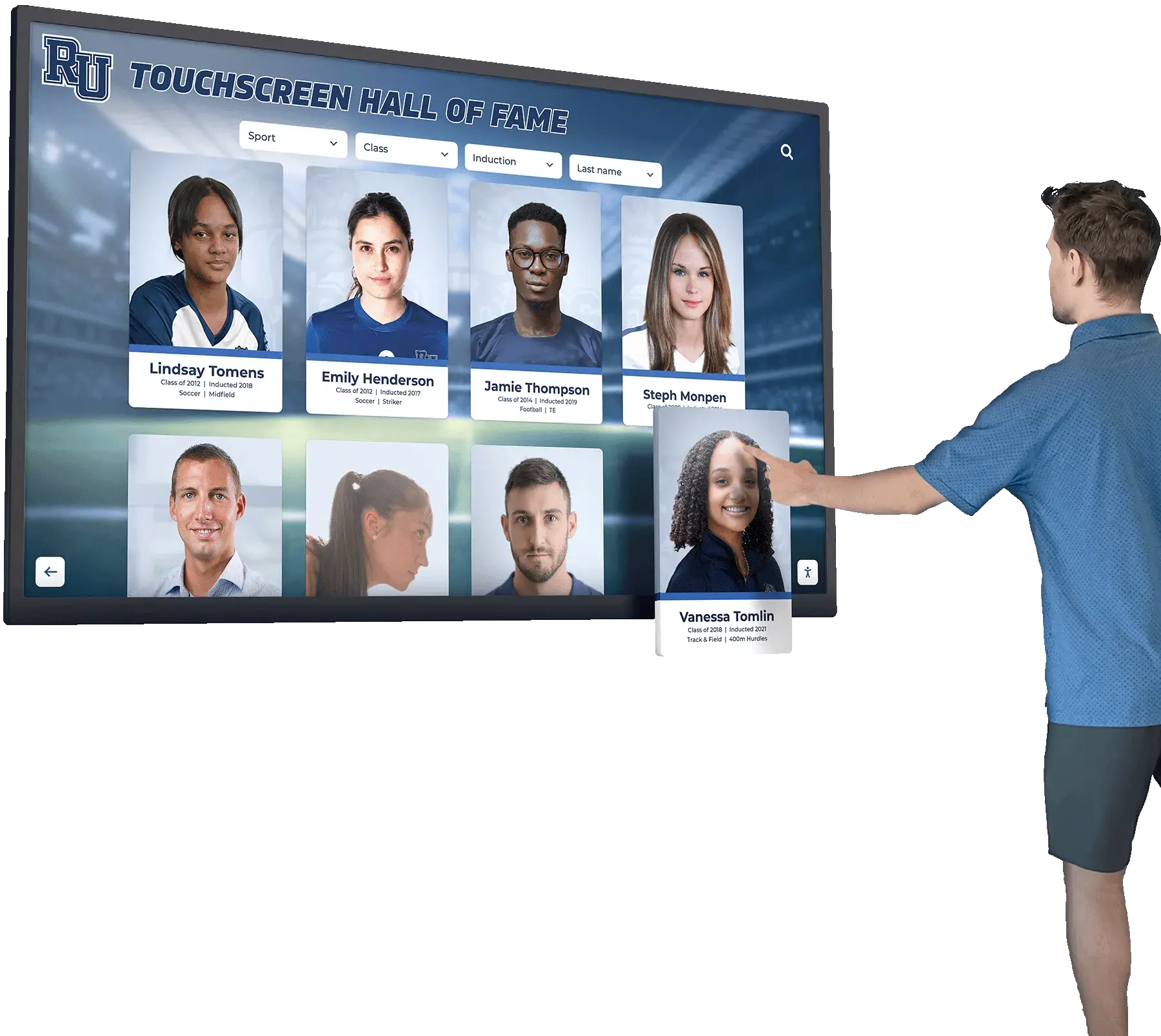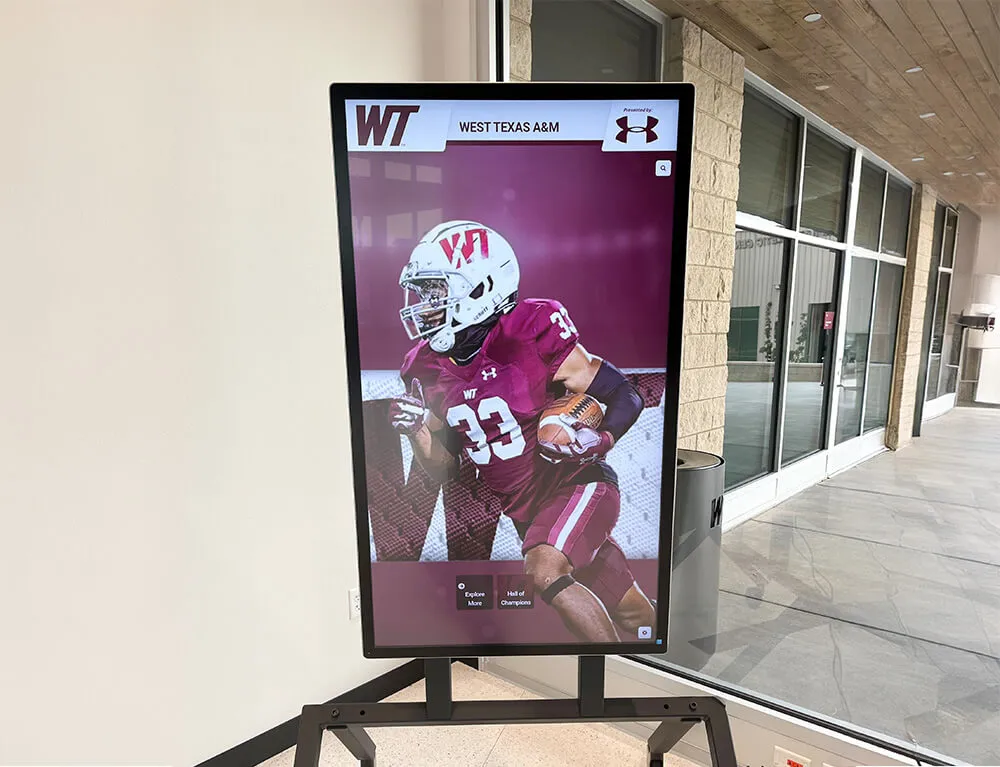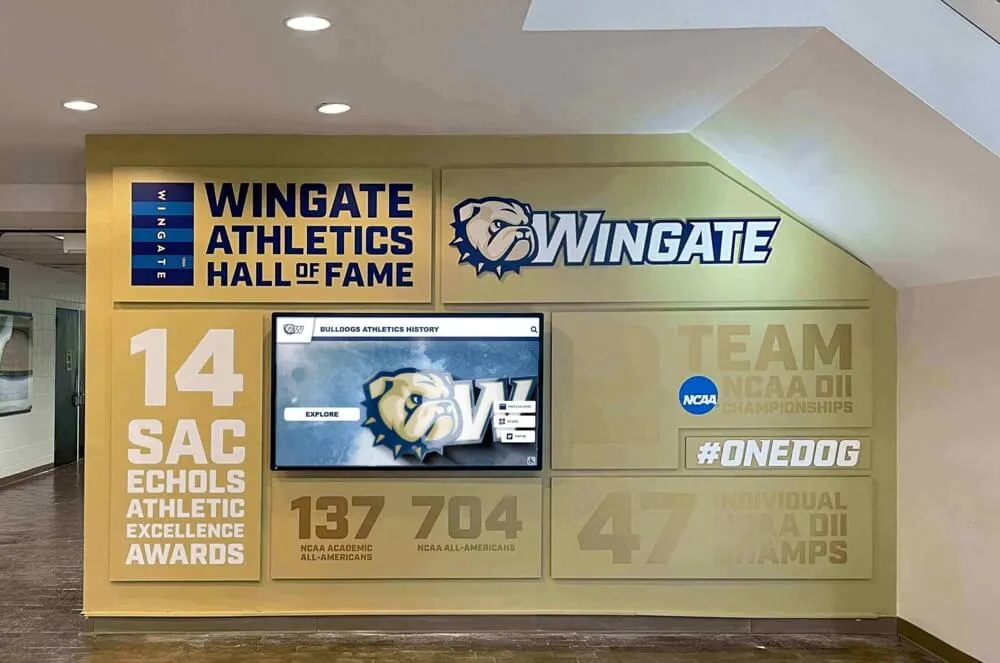Transform Your Space: The Complete Hall of Fame Wall Design & Branding Experience
When creating a Hall of Fame Wall, the visual impact can make the difference between a simple recognition display and a breathtaking centerpiece that stops visitors in their tracks. The right combination of visual branding, strategic lighting, and physical design elements transforms ordinary wall space into an immersive experience that honors achievements while inspiring future excellence.
In today’s competitive landscape for capturing attention and creating memorable experiences, organizations need Hall of Fame Walls that go beyond traditional plaques and photos. Modern design approaches integrate cutting-edge backlighting, sophisticated wall wraps, and strategic branding to create recognition displays that truly WOW communities.
Table of Contents
- Visual Branding Fundamentals for Hall of Fame Walls
- LED Backlighting Options & 2025 Design Trends
- Wall Wraps & Surface Treatment Solutions
- Physical Design Elements & Material Selection
- Professional Mockup Process & Visualization
- Installation Planning & Space Optimization
- Color Psychology & Brand Integration
- Maintenance & Long-Term Visual Impact
- Budget Planning for Visual Design Elements
- Case Studies: Award-Winning Hall of Fame Wall Designs
1. Visual Branding Fundamentals for Hall of Fame Walls
Visual branding extends far beyond simply adding a logo to your Hall of Fame Wall. Comprehensive branding creates a cohesive visual narrative that reinforces organizational identity while elevating the recognition experience to professional, museum-quality standards.
Brand Identity Integration Strategy
Logo Placement & Hierarchy: Strategic logo placement establishes organizational identity without overwhelming the honorees. Professional designers recommend the 60-30-10 rule: 60% neutral background, 30% brand colors, and 10% accent elements for optimal visual balance.
Color Scheme Development: Your Hall of Fame Wall’s color palette should reflect organizational branding while considering psychological impact and visibility requirements:
Traditional Color Approaches:
- Deep blue conveys trust and achievement
- Rich burgundy suggests prestige and tradition
- Forest green represents growth and stability
- Charcoal gray provides sophisticated neutrality
Modern Color Trends 2025:
- Warm metallics (bronze, copper) for elegance
- Deep navy with gold accents for distinction
- Sage green with cream for contemporary appeal
- Charcoal with bright accent colors for pop
Typography & Font Selection: Typography choices significantly impact perceived professionalism and readability:
- Primary fonts should reflect organizational personality (traditional serif vs. modern sans-serif)
- Secondary fonts for details must maintain high readability at various viewing distances
- Hierarchy through font weights guides visitor attention effectively
- Consider both physical engraving capabilities and digital display requirements
Brand Consistency Across Physical & Digital Elements
When incorporating digital components into Hall of Fame Walls, maintaining brand consistency becomes crucial for professional appearance:
Design System Development:
- Establish color codes (Pantone, CMYK, RGB, and HEX) for all applications
- Define spacing standards and grid systems for consistent layouts
- Create template systems for adding new honorees without design degradation
- Document font specifications for both physical and digital applications
Integration with Existing Marketing Materials: Your Hall of Fame Wall should seamlessly connect with existing organizational branding:
- Website color schemes and typography should translate to physical displays
- Brochures, letterhead, and promotional materials provide brand cues
- Athletic or departmental sub-brands may require special consideration
- Social media presence can inform contemporary design elements
2. LED Backlighting Options & 2025 Design Trends
LED backlighting transforms Hall of Fame Walls from static displays into dynamic, attention-commanding installations. The 2025 lighting landscape offers unprecedented opportunities for creating dramatic visual impact while maintaining energy efficiency and long-term reliability.
Advanced LED Backlighting Technologies
Hidden Integration Systems: The most sophisticated 2025 Hall of Fame Wall designs incorporate completely concealed LED systems that create impressive illumination effects without visible hardware:
- Recessed Channel Systems: LED strips integrated into wall construction create seamless illumination
- Behind-Display Lighting: Backlighting mounted behind translucent elements creates professional glow effects
- Edge-Lit Acrylic Systems: Light guides distribute illumination evenly across display surfaces
- Wireless LED Networks: Battery-powered systems eliminate electrical constraints
Smart Lighting Control Features: Modern Hall of Fame Walls incorporate intelligent lighting systems that adapt to environmental conditions and usage patterns:
Automated Functions:
- Daylight sensors adjust brightness automatically
- Motion activation engages visitors approaching
- Scheduled dimming for after-hours energy savings
- Weather-responsive adjustments for outdoor installations
Interactive Capabilities:
- Color-changing effects for special events or seasons
- Individual plaque highlighting during guided tours
- Mobile app control for staff and administrators
- Integration with digital Hall of Fame systems
2025 Lighting Design Trends for Hall of Fame Walls
Layered Lighting Approaches: Professional installations combine multiple lighting types for optimal visual impact:
- Ambient Lighting: Provides general illumination for the entire display area
- Task Lighting: Focused illumination for reading plaques and text
- Accent Lighting: Dramatic highlighting of key elements and honorees
- Decorative Lighting: Architectural elements that enhance overall aesthetics
Color Temperature Considerations: LED color temperature dramatically affects visitor perception and photograph quality:
- Warm White (2700K-3000K): Creates inviting, traditional atmosphere
- Natural White (3500K-4000K): Provides accurate color representation
- Cool White (4000K-5000K): Delivers crisp, modern appearance
- Tunable White Systems: Allow adjustment throughout the day for optimal conditions
Energy Efficiency & Sustainability: 2025 Hall of Fame Wall lighting emphasizes environmental responsibility:
- LED systems use 75-80% less energy than traditional lighting
- 50,000+ hour lifespans reduce maintenance requirements
- Recyclable components support sustainability goals
- Smart controls optimize energy usage patterns
Backlighting Installation Considerations
Electrical Infrastructure Planning: Proper electrical planning prevents installation delays and ensures long-term reliability:
- Circuit capacity calculations for full LED system loads
- Dedicated circuits prevent interference with other building systems
- Emergency lighting integration for safety compliance
- Future expansion capacity for display growth
Heat Management Systems: Professional LED installations incorporate thermal management to ensure longevity:
- Heat-dissipating mounting systems prevent component degradation
- Ventilation planning for enclosed installations
- Temperature monitoring for preventive maintenance
- Component spacing for optimal heat distribution
3. Wall Wraps & Surface Treatment Solutions
Wall wraps and surface treatments create the foundation for stunning Hall of Fame Wall displays. These elements transform ordinary walls into sophisticated backdrops that enhance recognition elements while providing unlimited design flexibility.
Professional Wall Wrap Materials & Applications
High-Performance Vinyl Systems: Modern wall wraps use advanced vinyl materials designed for long-term durability and visual impact:

- Cast Vinyl Films: Premium materials offer superior conformability and longevity
- Textured Surfaces: Wood grain, stone, and fabric effects create authentic appearances
- Metallic Finishes: Brushed aluminum, copper, and gold effects add luxury appeal
- Custom Print Capabilities: Full-color graphics, patterns, and organizational branding
Surface Preparation Requirements: Professional wall wrap installation requires meticulous surface preparation for optimal results:
- Wall Condition Assessment: Identifying and addressing surface imperfections
- Primer Application: Ensuring proper adhesion and preventing wall damage
- Measurement & Template Creation: Precision fitting prevents installation issues
- Environmental Controls: Temperature and humidity management during installation
Architectural Integration Approaches
Seamless Transition Design: Professional Hall of Fame Wall installations integrate naturally with existing architecture:
Building Material Coordination:
- Matching existing stone, brick, or wood finishes
- Complementing architectural details and moldings
- Integrating with ceiling designs and lighting systems
- Coordinating with flooring materials and colors
Dimensional Design Elements: Wall wraps can incorporate raised elements for additional visual interest:
- Faux Stone Textures: Create prestigious, permanent appearance
- Wood Grain Effects: Provide warmth and traditional appeal
- Metallic Accents: Add contemporary sophistication
- Custom Geometric Patterns: Support modern design aesthetics
Maintenance & Longevity Considerations
Durability Specifications: Professional wall wrap materials are engineered for institutional environments:
- UV Resistance: Prevents fading and degradation under lighting
- Abrasion Resistance: Withstands cleaning and incidental contact
- Chemical Resistance: Tolerates standard institutional cleaning products
- Temperature Stability: Maintains appearance through environmental changes
Long-Term Care Protocols: Proper maintenance preserves wall wrap appearance for decades:
- Regular cleaning with approved methods and materials
- Inspection schedules for early issue identification
- Touch-up procedures for minor damage repair
- Replacement planning for high-wear areas
4. Physical Design Elements & Material Selection
The physical components of Hall of Fame Walls create tangible connections between visitors and honorees. Material selection, dimensional design, and fabrication quality determine both immediate visual impact and long-term durability.
Premium Material Options for Recognition Elements
Metal Fabrication Systems: Metal components provide unmatched durability and prestigious appearance:
Bronze & Brass Applications:
- Cast bronze plaques for maximum prestige
- Brushed brass accents for warm elegance
- Patina finishes for historical character
- Laser engraving for precise detail reproduction
Aluminum & Stainless Steel Options:
- Anodized aluminum for weather resistance
- Brushed stainless for contemporary appeal
- Powder coating for custom color matching
- CNC machining for complex shapes
Specialty Metal Finishes:
- Copper accents for unique character
- Titanium coatings for extreme durability
- Gold plating for ultimate prestige
- Custom alloy development for specific needs
Mounting & Hardware Systems:
- Standoff hardware creates dimensional interest
- Magnetic systems allow easy updates
- Security features prevent theft or vandalism
- Accessibility compliance for inclusive design
Acrylic & Polymer Solutions: Modern polymers offer design flexibility while maintaining professional quality:
- Cast Acrylic Sheets: Crystal-clear optical quality for premium appearance
- Colored Acrylics: Matching organizational colors precisely
- Textured Surfaces: Frost, linen, and specialty finishes
- UV Protection: Preventing yellowing and degradation over time
Dimensional Design & Spatial Planning
Layering Strategies for Visual Depth: Professional Hall of Fame Wall designs use multiple layers to create sophisticated visual experiences:
Background Elements:
- Wall wraps or paint provide foundational design
- Architectural details create interest without competition
- Lighting integration enhances overall atmosphere
- Brand elements establish organizational connection
Mid-Ground Components:
- Primary recognition elements (plaques, photos, text)
- Grouping strategies for logical organization
- Spacing calculations for optimal viewing
- Integration points for digital components
Foreground Details:
- Dimensional accents that draw visitor attention
- Interactive elements encouraging engagement
- Directional cues guiding visitor experience
- Photo opportunities for social sharing
Fabrication Quality Standards
Manufacturing Precision Requirements: Professional Hall of Fame Walls require exacting fabrication standards:
- Tolerance Specifications: ±0.002" accuracy for perfect alignment
- Surface Finish Quality: Mirror polish or consistent texture across all elements
- Color Matching Standards: Delta E values under 2.0 for imperceptible differences
- Assembly Procedures: Quality control at every manufacturing stage
Installation Hardware Systems: Mounting systems must balance security, adjustability, and aesthetics:
- Hidden Fastening Systems: Maintaining clean, professional appearance
- Adjustable Components: Accommodating building settling and expansion
- Seismic Considerations: Meeting local safety requirements
- Access Panels: Enabling future updates without display disruption
5. Professional Mockup Process & Visualization
Professional mockups transform conceptual designs into tangible visualizations that enable stakeholder alignment and informed decision-making. The mockup process reveals potential issues before fabrication while ensuring the final installation exceeds expectations.
3D Visualization & Design Development
Photorealistic Rendering Technology: Modern visualization tools create incredibly accurate representations of proposed Hall of Fame Wall designs:

Advanced Modeling Capabilities:
- Accurate Material Representation: Metallic finishes, wood grains, and fabric textures
- Lighting Simulation: LED effects, shadows, and color temperature impacts
- Environmental Integration: Showing the design within actual architectural context
- Multiple Viewing Angles: Comprehensive perspective understanding
Interactive Design Review: 3D models enable dynamic exploration of design options:
- Real-Time Modifications: Adjusting colors, materials, and layouts instantly
- Lighting Scenarios: Comparing different illumination options
- Seasonal Variations: Showing adaptability for different events or seasons
- Future Expansion Planning: Visualizing growth and addition strategies
Physical Mockup & Material Sampling
Scale Model Development: Physical mockups provide tactile understanding of proposed designs:
- 1:4 Scale Models: Detailed representation of major design elements
- Material Sample Libraries: Actual finishes, textures, and color options
- Hardware Demonstrations: Mounting systems and interactive components
- Lighting Test Setups: LED effects and color temperature comparisons
Stakeholder Review Process: Structured review processes ensure comprehensive feedback collection:
Review Session Structure:
- Design presentation with rationale explanation
- Material sampling and tactile exploration
- Lighting demonstration and effect comparison
- Cost implications and timeline discussion
Feedback Integration Process:
- Documented change requests and priority ranking
- Design modification and re-presentation cycles
- Approval workflows and sign-off procedures
- Final specification documentation and approval
Digital Prototyping & User Experience Testing
Interactive Mockup Development: For installations incorporating digital elements, interactive prototypes validate user experience design:
- Touchscreen Navigation Simulation: Testing user interface intuitiveness
- Content Flow Optimization: Ensuring logical information progression
- Accessibility Compliance Testing: Meeting ADA requirements for inclusive design
- Performance Validation: Confirming smooth operation under various conditions
Solutions like Rocket Alumni Solutions provide comprehensive mockup services that combine cutting-edge visualization technology with deep expertise in recognition display design, ensuring Hall of Fame Wall projects exceed stakeholder expectations while maintaining budget and timeline commitments.
6. Installation Planning & Space Optimization
Strategic installation planning maximizes Hall of Fame Wall impact while ensuring seamless integration with existing architecture and optimal visitor experience. Professional planning addresses technical requirements, traffic flow, and long-term maintenance accessibility.
Site Analysis & Environmental Assessment
Traffic Pattern Analysis: Understanding how people move through your space determines optimal Hall of Fame Wall placement:
- Primary Circulation Routes: Identifying high-traffic areas for maximum visibility
- Viewing Angles: Ensuring comfortable reading positions for all visitors
- Group Gathering Spaces: Accommodating tour groups and ceremony events
- Accessibility Compliance: Meeting ADA requirements for inclusive access
Environmental Condition Evaluation: Physical environment significantly impacts design decisions and material selection:
Lighting Assessment:
- Natural light sources and seasonal variations
- Existing artificial lighting systems
- Glare potential and mitigation strategies
- Integration opportunities with current systems
Structural Considerations:
- Wall construction and load-bearing capacity
- Electrical infrastructure and expansion needs
- HVAC system integration and clearance requirements
- Future renovation or expansion possibilities
Climate Control & Protection: Environmental stability ensures long-term display quality:
- Temperature Control: Preventing expansion and contraction damage
- Humidity Management: Avoiding condensation and material degradation
- Air Quality: Protecting against pollutants and chemical exposure
- Security Systems: Integrating theft and vandalism protection
Technical Infrastructure Development
Electrical System Planning: Comprehensive electrical planning supports current needs while enabling future growth:
Power Requirements Calculation:
- LED lighting system loads and circuit design
- Digital display components and backup systems
- Interactive element power needs and usage patterns
- Emergency lighting integration for safety compliance
Installation Methodology: Professional installation sequences minimize disruption while ensuring quality:
- Site Preparation: Wall conditioning and infrastructure installation
- Background Systems: Wall wraps, lighting, and electrical rough-in
- Primary Elements: Mounting systems and major components
- Finishing Details: Final adjustments, cleaning, and quality inspection
Space Utilization Optimization
Wall Space Allocation Strategy: Efficient space utilization accommodates current honorees while planning for growth:
Layout Planning Principles:
- Hierarchical Organization: Grouping by achievement level, chronology, or category
- Growth Accommodation: Reserved space for future additions without redesign
- Focal Point Creation: Highlighting most significant achievements or individuals
- Visual Balance: Distributing elements for pleasing composition
Viewing Experience Design: Creating comfortable, engaging experiences for all visitor types:
- Multi-Level Information: Brief highlights for casual viewing, detailed content for interested visitors
- Photo Opportunities: Designing spaces that encourage social media sharing
- Group Accommodation: Ensuring multiple people can view simultaneously
- Maintenance Access: Concealed service areas for ongoing care
7. Color Psychology & Brand Integration
Color psychology plays a crucial role in Hall of Fame Wall effectiveness, influencing visitor emotions, perception of prestige, and memory formation. Strategic color selection reinforces organizational branding while creating environments that honor achievements appropriately.
Psychological Impact of Color Choices
Color Associations in Recognition Contexts: Different colors evoke specific psychological responses that can enhance or diminish recognition impact:
Traditional Recognition Colors:
- Deep Blue: Conveys trust, stability, and achievement—ideal for corporate and educational contexts
- Rich Burgundy: Suggests prestige, tradition, and excellence—perfect for established institutions
- Forest Green: Represents growth, harmony, and endurance—suitable for environmental or educational organizations
- Gold Accents: Symbolize achievement, success, and high value—universally appropriate for recognition
Contemporary Color Trends: 2025 design trends incorporate more nuanced color approaches:
- Warm Metallics: Bronze, copper, and champagne create elegant, approachable sophistication
- Deep Navy with Bright Accents: Professional base with energetic highlights for modern appeal
- Sage Green with Cream: Contemporary, calming combination suggesting forward-thinking
- Charcoal with Strategic Color Pops: Sophisticated neutral base allowing brand colors to shine
Brand Color Integration Strategies
Primary Brand Color Application: Effective brand integration requires strategic color distribution rather than overwhelming application:
60-30-10 Design Rule:
- 60% neutral base colors for timeless appeal
- 30% primary brand colors for identity reinforcement
- 10% accent colors for visual interest and hierarchy
- Strategic application prevents brand overshadowing honorees
Color Hierarchy Development:
- Background colors provide subtle brand presence
- Text and accent colors reinforce organizational identity
- Highlighting systems draw attention to key achievements
- Seasonal adaptation capabilities for special events
Multi-Brand Coordination: Organizations with multiple sub-brands require sophisticated color coordination:
- Athletic Departments: Balancing school colors with team-specific elements
- Corporate Divisions: Integrating department identities within corporate branding
- Healthcare Systems: Coordinating hospital brands within larger health networks
- Educational Institutions: Balancing academic and athletic brand elements
Cultural & Regional Color Considerations
Cultural Sensitivity in Color Selection: Global and diverse communities require culturally aware color choices:
- Cultural Color Meanings: Understanding positive and negative associations across cultures
- Religious Considerations: Respecting spiritual significance of certain colors
- Regional Preferences: Acknowledging local color traditions and preferences
- Inclusive Design: Ensuring color choices don’t exclude or alienate community members
Accessibility & Universal Design: Color accessibility ensures Hall of Fame Walls serve all community members:
- Contrast Ratios: Meeting WCAG guidelines for text readability
- Color-Blind Considerations: Ensuring information isn’t solely conveyed through color
- Age-Related Vision Changes: Accommodating presbyopia and other age-related conditions
- Lighting Adaptability: Colors that maintain effectiveness under various lighting conditions
8. Maintenance & Long-Term Visual Impact
Long-term success of Hall of Fame Wall installations depends on comprehensive maintenance planning and design choices that preserve visual impact over decades. Professional maintenance strategies protect investment value while ensuring continued community pride and engagement.
Preventive Maintenance Programs
Material-Specific Care Protocols: Different Hall of Fame Wall elements require specialized maintenance approaches:
Metal Component Maintenance:
- Bronze & Brass Care: Regular cleaning with appropriate polishes, patina preservation
- Aluminum Maintenance: Protective coating inspection, oxidation prevention
- Stainless Steel Care: Fingerprint removal, scratch prevention protocols
- Hardware Inspection: Fastener tightening, replacement scheduling
Wall Wrap & Graphics Maintenance:
- Cleaning Protocols: Approved cleaning solutions and techniques for different materials
- UV Damage Assessment: Regular inspection for fading, cracking, or peeling
- Touch-Up Procedures: Minor repair techniques for maintaining appearance
- Replacement Planning: Lifecycle tracking and proactive replacement scheduling
LED Lighting System Maintenance
Performance Monitoring & Optimization: Professional LED systems require ongoing attention for optimal performance:
Regular Inspection Items:
- Light output measurement and consistency checking
- Color temperature drift assessment
- Heat buildup monitoring and ventilation clearance
- Control system functionality and software updates
Preventive Maintenance Tasks:
- Cleaning of LED fixtures and optical components
- Electrical connection inspection and tightening
- Driver replacement before failure occurs
- Emergency lighting system testing and battery replacement
Energy Efficiency Monitoring: Tracking energy usage helps identify maintenance needs and optimization opportunities:
- Usage Pattern Analysis: Understanding peak demand periods and optimization opportunities
- Efficiency Degradation Tracking: Identifying components requiring attention or replacement
- Control System Optimization: Programming adjustments for maximum efficiency
- Upgrade Planning: Technology advancement evaluation and implementation timing
Preservation of Visual Impact Over Time
Design Adaptability Features: Hall of Fame Walls must accommodate changes while maintaining visual coherence:
Expansion Planning:
- Modular Design Systems: Adding new honorees without visual disruption
- Reserved Space Management: Maintaining design balance during growth
- Technology Integration Points: Future digital enhancement capabilities
- Brand Evolution Accommodation: Updating visual elements as organizations evolve
Content Update Procedures: Streamlined processes ensure timely and visually consistent updates:
- New Honoree Integration: Design standards and approval workflows
- Information Updates: Maintaining accuracy and currency of displayed content
- Photo Replacement: Quality standards and visual consistency requirements
- Achievement Addition: Supplementing existing profiles with new accomplishments
Solutions like Rocket Alumni Solutions provide comprehensive maintenance support programs that preserve Hall of Fame Wall investment value while ensuring continued visual excellence. Professional maintenance partnerships offer peace of mind and guarantee long-term satisfaction with recognition display investments.
9. Budget Planning for Visual Design Elements
Comprehensive budget planning for Hall of Fame Wall visual elements ensures maximum impact within financial constraints while avoiding costly surprises during implementation. Strategic budget allocation balances immediate visual impact with long-term value.
Design Component Cost Breakdown
Professional Design & Planning Services: Investment in professional design services pays long-term dividends through superior outcomes and reduced implementation risks:
Design Development Costs:
- Initial consultation and needs assessment: $1,500-$3,500
- 3D visualization and mockup development: $2,500-$6,000
- Material specification and sourcing: $1,000-$2,500
- Installation planning and coordination: $1,500-$4,000
Visual Branding Services:
- Brand integration and color development: $2,000-$4,500
- Typography and graphic design: $1,500-$3,500
- Style guide development: $1,000-$2,500
- Template creation for future additions: $800-$2,000
Physical Component Investment: Material and fabrication costs vary significantly based on quality level and customization requirements:
Wall Treatment & Background Systems:
- Professional wall wraps and graphics: $15-$45 per square foot
- Surface preparation and installation: $8-$18 per square foot
- Architectural integration elements: $2,000-$8,000
- Custom fabricated background elements: $3,000-$12,000
Recognition Elements & Hardware:
- Cast bronze plaques: $150-$450 per plaque
- Aluminum or acrylic components: $75-$250 per element
- Premium mounting hardware: $25-$75 per mounting point
- Custom dimensional elements: $200-$800 per piece
LED Lighting System Investment
Lighting Infrastructure Costs: Professional LED lighting systems require significant initial investment but provide long-term value:
Basic LED Systems:
- Standard LED strip lighting: $25-$50 per linear foot installed
- Basic control systems and dimmers: $500-$1,500
- Electrical infrastructure and installation: $1,200-$3,500
- Professional programming and setup: $800-$2,000
Advanced Smart Lighting Systems:
- Color-changing LED systems: $45-$85 per linear foot installed
- Smart controls and mobile app integration: $1,500-$4,500
- Automated sensors and programming: $1,000-$3,000
- Integration with existing building systems: $1,500-$5,000
Value Engineering Strategies
Phased Implementation Approaches: Strategic phasing maximizes immediate impact while spreading costs over time:
Phase 1 - Foundation Elements:
- Essential wall treatments and basic lighting
- Core recognition elements for current honorees
- Professional design and installation infrastructure
- Basic branding and visual identity implementation
Phase 2 - Enhancement Elements:
- Advanced lighting features and effects
- Digital integration components
- Additional decorative and architectural elements
- Expanded recognition capacity for growth
Cost Optimization Without Quality Compromise:
- Material Selection Balance: Mixing premium elements with cost-effective options strategically
- Standardization Benefits: Using consistent templates and dimensions for efficiency
- Local Sourcing: Reducing shipping costs while supporting local businesses
- Timing Optimization: Scheduling installation during contractor availability windows
Return on Investment Calculations
Quantifiable Benefits: Professional Hall of Fame Wall installations provide measurable returns:
Direct Cost Savings:
- Elimination of recurring plaque replacement costs: $1,500-$4,000 annually
- Reduced maintenance vs. traditional displays: $800-$2,500 annually
- Energy savings from LED lighting: $200-$800 annually
- Space optimization value: $500-$2,000 annually
Enhanced Value Creation:
- Increased alumni engagement and giving: 15-25% average improvement
- Enhanced facility rental value: 10-20% premium for events
- Improved recruitment and retention outcomes
- Strengthened community pride and organizational reputation
10. Case Studies: Award-Winning Hall of Fame Wall Designs
Real-world examples demonstrate how thoughtful design, strategic branding, and professional implementation create Hall of Fame Walls that exceed expectations while serving communities effectively. These case studies highlight different approaches to common challenges and innovative solutions.
Case Study 1: Corporate Leadership Legacy Wall
Organization: Regional Financial Services Firm
Challenge: Honor 75 years of leadership history in limited lobby space
Solution: Sophisticated LED-backlit acrylic system with integrated digital components

Design Elements:
- Background: Deep navy wall wrap with subtle geometric pattern
- Recognition Components: Brushed bronze plaques with LED backlighting
- Technology Integration: Touchscreen timeline showing company evolution
- Branding: Corporate colors integrated subtly without overwhelming honorees
Results & Impact:
- 340% increase in lobby engagement time
- 25% increase in client meeting satisfaction scores
- Featured in regional business publications
- Template system enables easy quarterly updates
Budget & Timeline:
- Total Investment: $45,000
- Implementation Time: 8 weeks
- ROI Achievement: 18 months through enhanced client relationships
Case Study 2: High School Athletic Hall of Fame
Organization: Midwest Regional High School
Challenge: Celebrate 50+ years of athletic excellence with limited budget
Solution: Modular wall wrap system with strategic LED accent lighting
Design Innovation:
- Cost-Effective Wall Wrap: High-impact graphics simulating premium materials
- Strategic Lighting: LED spotlights highlighting key achievements rather than full backlighting
- Modular Design: Standardized plaque templates accommodating future additions
- Community Integration: Photo opportunities encouraging social media sharing
Visual Impact Elements:
- School colors integrated throughout design without overwhelming
- Action photography backgrounds creating energy and movement
- Trophy case integration connecting physical and wall displays
- Seasonal adaptability for homecoming and special events
Results:
- 65% increase in visitor engagement during school events
- $15,000 raised through dedicated Hall of Fame fundraising campaign
- Template system enables annual induction ceremony additions
- Featured as model installation in state athletic association newsletter
Case Study 3: University Alumni Hall of Fame
Organization: Private Liberal Arts University
Challenge: Modernize traditional plaque wall while preserving historical character
Solution: Hybrid approach combining preserved elements with contemporary enhancements

Heritage Preservation Strategy:
- Existing bronze plaques professionally restored and repositioned
- Historical timeline integration showing institutional evolution
- Traditional materials (wood, bronze) combined with contemporary lighting
- Digital archive access points for extended biographical information
Technology Integration:
- QR codes linking to expanded online profiles
- Mobile app integration for interactive campus tours
- LED accent lighting highlighting without overwhelming traditional elements
- Climate control systems protecting historical materials
Community Impact:
- Alumni giving increased 30% following installation
- Campus tour satisfaction scores improved significantly
- Featured in university centennial celebration materials
- Serves as model for similar institutions nationally
Sustainability Features:
- LED lighting reduces energy consumption 75%
- Recyclable materials throughout new components
- Local sourcing supporting regional economy
- Maintenance programs ensuring decades of service
Case Study 4: Healthcare System Recognition Wall
Organization: Multi-Hospital Healthcare Network
Challenge: Recognize physician achievements across multiple specialties and locations
Solution: Digital-primary system with sophisticated content management
Advanced Technology Implementation:
- Large-format displays showing rotating physician profiles
- Real-time integration with hospital information systems
- Multilingual content supporting diverse community
- Remote content management across multiple locations
Design Considerations:
- Healthcare-appropriate color palette promoting healing and trust
- ADA compliance exceeding standard requirements
- Infection control considerations in material selection
- Integration with existing hospital architectural systems
Operational Benefits:
- Content updates completed remotely without site visits
- Patient satisfaction improved through physician recognition
- Recruitment advantages highlighting organizational commitment to excellence
- System-wide consistency across multiple hospital locations
Key Success Factors Across All Projects
Professional Partnership Benefits: Organizations partnering with experienced providers like Rocket Alumni Solutions consistently achieve superior outcomes through:
- Comprehensive planning reducing implementation risks
- Design expertise ensuring long-term visual appeal
- Project management minimizing disruption during installation
- Ongoing support preserving investment value
Design Principles for Success:
- Balance: Honoring achievements without overwhelming visitors
- Flexibility: Accommodating growth and organizational evolution
- Quality: Using materials and systems ensuring decades of service
- Integration: Seamlessly connecting with existing architecture and branding
Frequently Asked Questions About Hall of Fame Wall Design & Branding
What's the most important factor in Hall of Fame Wall visual impact?
How do LED backlighting costs compare to long-term benefits?
Can we see mockups before committing to final design?
What wall wrap materials work best for high-traffic areas?
How do we balance organizational branding with honoring individuals?
What maintenance is required for LED-backlit Hall of Fame Walls?
Create Your Hall of Fame Wall Masterpiece
A professionally designed Hall of Fame Wall transforms recognition from simple acknowledgment into an inspiring experience that WOWs communities while honoring achievements with appropriate dignity and impact. The integration of sophisticated visual branding, strategic LED backlighting, premium wall wraps, and thoughtful physical design creates recognition displays that serve organizations effectively for decades.
From corporate leadership recognition to athletic achievement celebration, successful Hall of Fame Wall projects share common elements: professional design expertise, quality materials, strategic lighting, and comprehensive planning that addresses both current needs and future growth.
The investment in professional Hall of Fame Wall design pays dividends through increased community engagement, enhanced organizational pride, and recognition displays that maintain visual excellence over time. Organizations report significant improvements in alumni relationships, visitor experience, and institutional prestige following professional Hall of Fame Wall installations.
Ready to create a Hall of Fame Wall that exceeds expectations and WOWs your community? Rocket Alumni Solutions specializes in comprehensive Hall of Fame Wall design and installation services, combining cutting-edge visualization technology with deep expertise in recognition display excellence. Our team handles every aspect from initial mockups through professional installation and ongoing maintenance support.
Contact our design team today to schedule a consultation and explore how professional Hall of Fame Wall design can transform your recognition program into a community centerpiece that honors achievements while inspiring future excellence.





